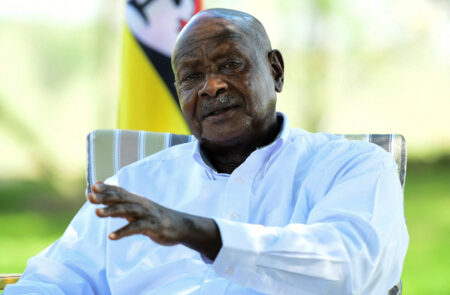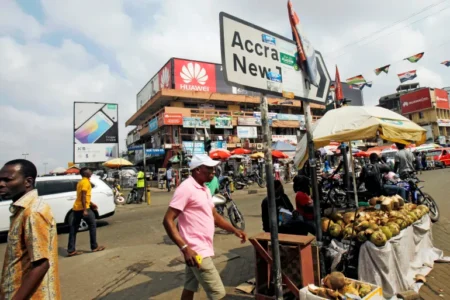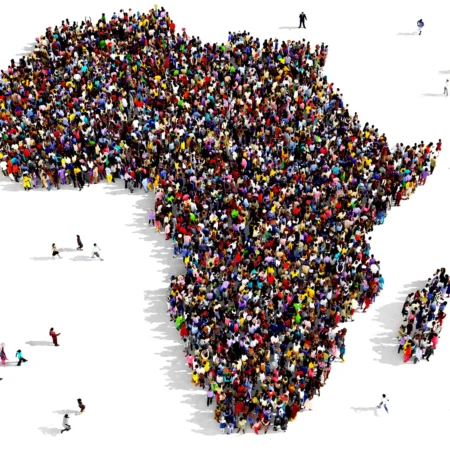- Africa’s new dawn: the rising role of digital and AI in agriculture
- Can Dangote Refinery Transform Africa Energy Ambition
- Gallup Survey: 80 per cent of Kenyan Workers Are Disengaged and Seek New Opportunities
- Madagascar Man Freed from 5KG Tumor After 15-Year Struggle
- How women in Africa are perceived and treated
- Sugar consumption in Kenya to Increase to 1.23 Million Tonnes
- Can Somalia and Turkey Oil deal Bring Change in Somaliland
- Remittances to Kenya dropped to $371.6 million in June, marking a six month low
Browsing: debt sustainability
- The IMF has issued Uganda $120 million as part of its Extended Credit Facility (ECF) Arrangement to aid recovery.
- Total disbursement to Uganda under the ECF Arrangement now reaches $870 million.
- IMF urges Uganda to give its Central Bank independence
Kampala is set to receive $120 million as part of its Extended Credit Facility (ECF) Arrangement with the International Monetary Fund (IMF) to aid Uganda’s economic recovery amidst various challenges, including backlash due to a harsh anti-LGBTQ law.
The IMF executive board has approved immediate disbursement of the said amount after the conclusion of its fifth review of Uganda’s ECF Arrangement. “This brings the aggregate disbursement under the ECF Arrangement to about $870 million,” the IMF note says in part.
Uganda qualified for about $1 billion under the ECF Arrangement as of June 2021, which is now distributed in part every other year.
IMF loan to aid Uganda’s economic recovery
…- AFRODAD and SADC have joined hands to boost Africa’s debt sustainability by cushioning highly indebted countries.
- Between 2004 and 2018, 30 African countries signed natural resource-backed loans worth $66 billion.
- China has emerged as a critical player in debt owed by African States, with an increasing percentage of debt now in resource-backed loans.
Boosting Africa’s debt sustainability
The African Forum and Network on Debt and Development (AFRODAD) has entered into a debt sustainability pact with the Southern African Development Community Parliamentary Forum to cushion governments from debt distress.
The move aimed to bolster financial stability and debt management strategies across Africa, with the continent’s total external debt hitting $1.13 trillion in October last year.
Highly indebted African countries continuously face stark trade-offs between servicing expensive debt, supporting high and growing development needs, and stabilising domestic currencies.
Government debt has risen in at least 40 African countries over the past decade. …
- Ghana’s economy is showing signs of stabilization, which is attributable to the authorities’ steadfast rollout of its IMF-supported economic program.
- The country’s crises were a result of preexisting vulnerabilities and substantial external shocks.
- Two years ago, elevated fiscal deficits and public debt levels, together with the combined effects of the COVID-19 pandemic, Russia’s war in Ukraine, and global monetary policy tightening, hit the country hard.
Renewed optimism for Ghana’s economy
The International Monetary Fund (IMF) has expressed optimism that Ghana is currently making essential inroads to stabilize its economy as continued program implementation beckons a brighter future.
This after the economy suffered a substantial economic and financial crisis in the better part of 2022 that made the cocoa and gold producers request the IMF support programme.
“Ghana’s crises were as a result of preexisting vulnerabilities and substantial external shocks,” the lender says.
“Two years ago, elevated fiscal deficits …
As the 16th president of Nigeria, Bola Ahmed Tinubu has inherited an economy grappling with record-high inflation, enduring unemployment, extreme poverty, crumbling infrastructure and high levels of insecurity. However, Nigeria’s debt situation is a sore thumb among these challenges.
Nigeria’s external debt stock stood at US$41.69 billion in 2022. Multilateral lenders accounted for almost half of this figure, with Eurobonds taking about 38 per cent of Nigeria’s external debt. China’s Exim Bank accounts for US$4.3 billion, or 86 per cent of the $5 billion in bilateral debt.…









